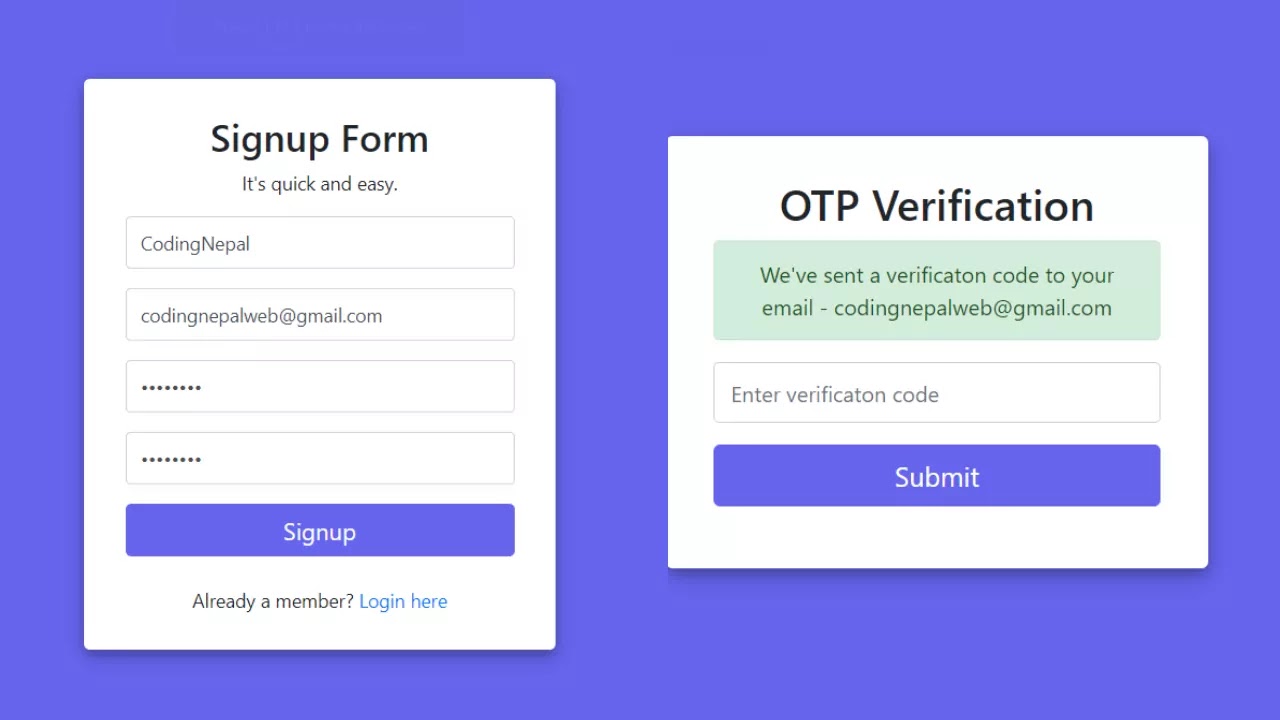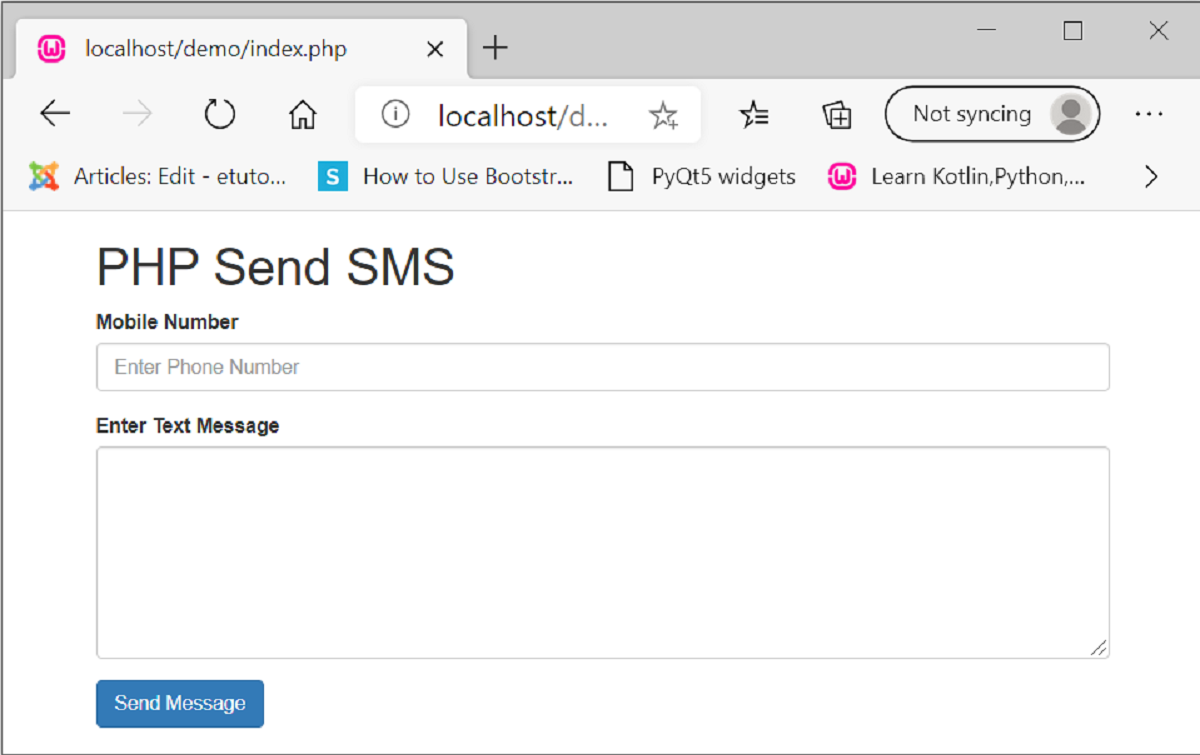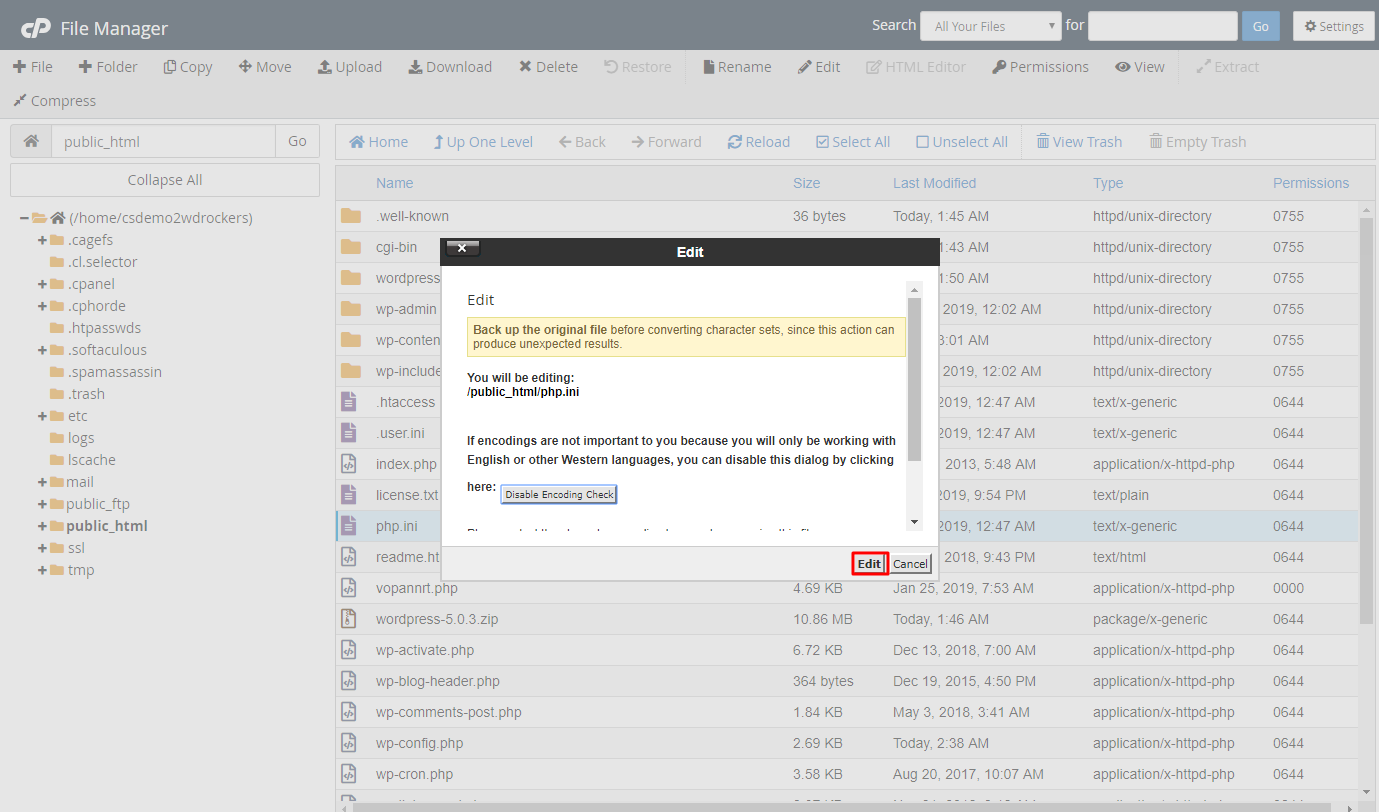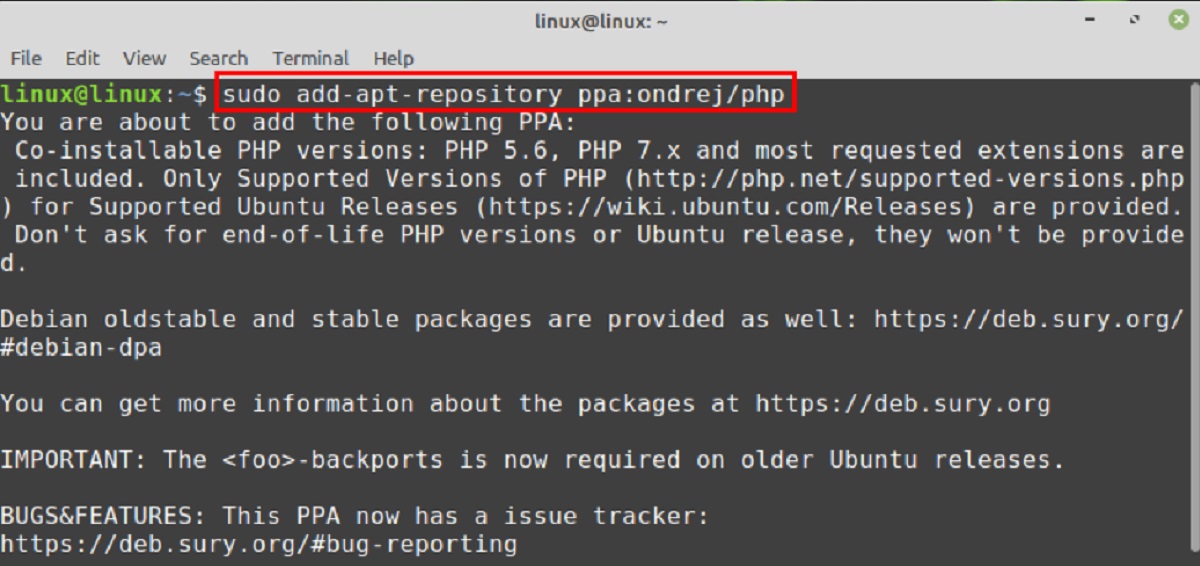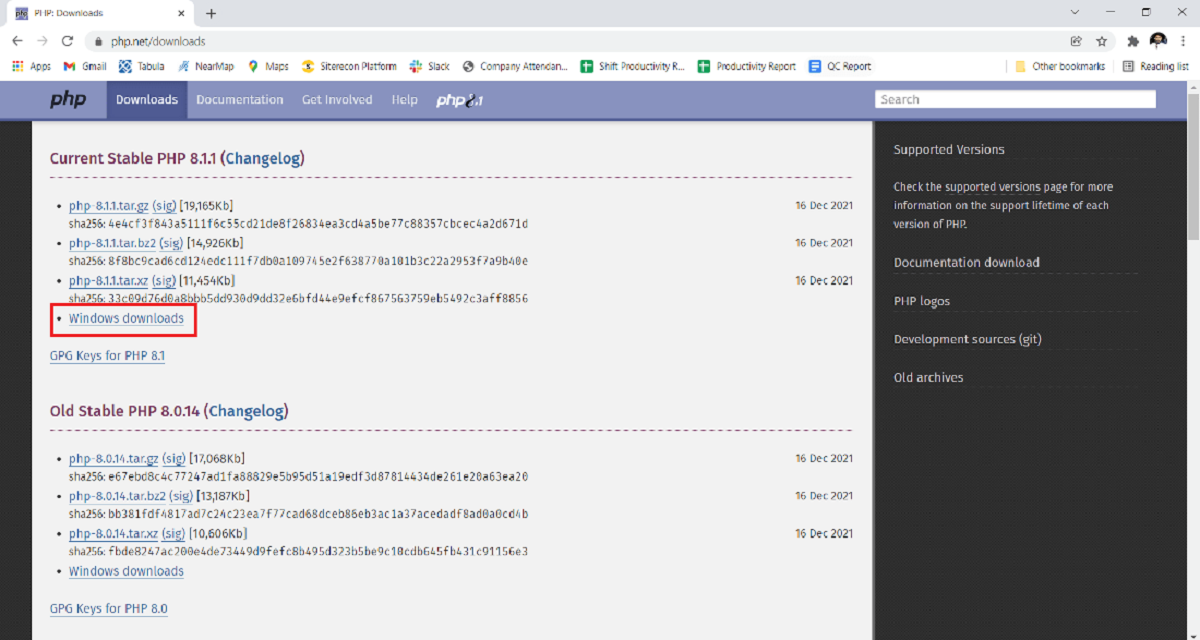Introduction
Verification codes play a crucial role in ensuring the security and authenticity of various online processes. Whether it’s verifying a user’s identity during account registration, password reset, or two-factor authentication, implementing a reliable and efficient verification code system is essential. In this article, we will delve into the world of PHP and explore how to create verification codes that can be sent via email or SMS.
Verification codes are random alphanumeric strings that are generated and sent to users to verify their identity or ownership of a particular account. The user is then required to enter the code correctly to proceed with the desired action. This extra layer of security helps protect against fraudulent activities and unauthorized access.
To create and send verification codes, we will be utilizing the power of PHP’s programming capabilities. PHP is a popular and versatile programming language that is widely used in web development. With its vast array of functions and libraries, PHP provides the necessary tools to generate random codes and send them via various communication channels.
In this article, we will cover the step-by-step process of setting up the PHP environment, generating random verification codes, and sending them through email or SMS. Additionally, we will explore various security measures that can be implemented to enhance the overall security of the verification code system.
By the end of this article, you will have a solid understanding of how to create a robust verification code system in PHP, enabling you to add an extra layer of security to your web applications and ensure the authenticity of user interactions.
How verification codes work
Before diving into the process of creating verification codes in PHP, it’s important to understand how they work and the purpose they serve. Verification codes act as temporary credentials that validate the authenticity and ownership of an account or user.
When a user initiates a process that requires verification, such as creating a new account or resetting a password, the system generates a unique verification code. This code is typically a combination of letters, numbers, or both, and is randomly generated to ensure its uniqueness and security.
The generated verification code is then sent to the user through a preferred communication method, such as email or SMS. The user is prompted to enter this code in the application or website to confirm their identity and proceed with the desired action.
Once the user enters the verification code, the system compares it with the previously generated code. If the two codes match, the system acknowledges the user’s identity and grants them access to their account or allows them to proceed with the requested action.
It’s important to note that verification codes are time-sensitive and have an expiration period. This means that they can only be used within a specific timeframe, typically a few minutes to prevent unauthorized use of the codes. After the expiration period, the code becomes invalid, and the user will need to request a new verification code.
The use of verification codes adds an additional layer of security to user accounts and sensitive actions. By requiring users to enter a correct verification code, it helps prevent automated bots and malicious actors from gaining unauthorized access to personal information or performing fraudulent activities.
Now that we have a clear understanding of how verification codes work, let’s move on to setting up the PHP environment and starting the process of generating random codes.
Setting up the PHP environment
Before we can start generating and sending verification codes in PHP, we need to ensure that we have a suitable environment set up for development. Here are the steps to set up the PHP environment:
- Install PHP: If you haven’t already, you’ll need to install PHP on your local machine or web server. PHP is available for download from the official PHP website and comes with comprehensive instructions for installation on various operating systems.
- Choose a development environment: You can choose to work with a simple text editor and run PHP scripts from the command line. Alternatively, you may prefer using an integrated development environment (IDE) such as PhpStorm or Visual Studio Code that provides a more feature-rich coding experience.
- Set up a web server: PHP scripts are typically run on a web server. You can choose to install a local server environment like XAMPP or WAMP, which includes PHP, Apache, MySQL, and other necessary components. Alternatively, you can use a remote web server to host your PHP files.
- Configure PHP.ini: The PHP configuration file (php.ini) allows you to modify various settings related to PHP. Depending on your requirements, you may need to make changes to settings such as error reporting, file upload limits, or email configuration.
- Test the installation: To ensure that PHP is properly installed and configured, create a simple test script. Open a text editor, enter the following code, and save the file with a .php extension:
Place the file in the document root of your web server (e.g., htdocs folder for XAMPP). Access the script through your web browser by entering the server’s URL followed by the file name (e.g., http://localhost/test.php). If everything is set up correctly, you should see “Hello, PHP!” displayed in your browser.
Once you’ve completed the steps above, you’re ready to move on to generating random verification codes using PHP. In the next section, we’ll explore how to generate secure and unique codes for your verification system.
Generating random verification codes
Now that we have our PHP environment set up, it’s time to generate random verification codes that can be used in our verification system. Generating random codes ensures their uniqueness and makes it difficult for unauthorized individuals to guess or predict them. Here’s how we can generate random verification codes using PHP:
- Define the code length: Determine the desired length of your verification codes based on your specific requirements. Typically, verification codes range from 6 to 8 characters long, but you can adjust the length to fit your needs.
- Generate a random code: PHP provides various functions for generating random numbers and characters. You can use functions like
mt_rand()orrandom_bytes()to generate a random code. - Restrict the character set: To ensure the code’s readability and usability, it’s important to restrict the character set to avoid confusing characters or ambiguous combinations. Choose a set of characters that includes a mix of uppercase letters, lowercase letters, and numbers.
- Store the code: Once the random code is generated, store it securely in a database or session variable. This allows you to compare the entered code with the stored code later on.
Here’s an example PHP function that generates a random verification code:
In the example above, we defined a character set that includes uppercase letters (excluding ambiguous characters like I and O) and numbers. The function utilizes the mt_rand() function to generate a random index and retrieves the corresponding character from the character set. The loop continues until the desired code length is reached, and the generated code is returned.
Now that we have a function to generate random verification codes, we can move on to the next step: sending these codes to users via email or SMS. In the following sections, we will explore how to implement each of these methods using PHP.
Sending verification codes via email
One of the most common methods to send verification codes is through email. This allows users to receive the code in their inbox and easily access it when needed. To send verification codes via email using PHP, follow these steps:
- Configure email settings: Before sending emails, you need to configure the SMTP settings in your PHP code. This includes specifying the SMTP server, port number, authentication credentials, and other necessary details. You can use the built-in
mail()function in PHP or a third-party library like PHPMailer or Swift Mailer. - Generate the verification code: Using the function we created earlier to generate a random code, generate the verification code that will be sent to the user.
- Compose the email message: Create an email template that includes the verification code and any additional instructions or information you want to provide to the user. You can utilize HTML and CSS to format the email for a better user experience.
- Send the email: Use the configured email settings and the
mail()function or chosen email library to send the email to the user’s email address. Include the verification code and any other relevant details in the email.
Here’s an example code snippet that demonstrates how to send a verification code via email using PHPMailer:
isSMTP();
$mail->Host = 'smtp.example.com';
$mail->Port = 587;
$mail->SMTPSecure = 'tls';
$mail->SMTPAuth = true;
$mail->Username = 'your-email@example.com';
$mail->Password = 'your-password';
// Generate verification code
$verificationCode = generateVerificationCode();
// Compose the email message
$mail->setFrom('your-email@example.com', 'Your Name');
$mail->addAddress('recipient@example.com');
$mail->Subject = 'Verification Code';
$mail->Body = 'Your verification code is: ' . $verificationCode;
// Send the email
$mail->send();
echo 'Verification code sent via email.';
} catch (Exception $e) {
echo 'Error sending email: ' . $mail->ErrorInfo;
}
?>In the example above, we use PHPMailer to handle the email sending process. We configure the SMTP settings, generate a verification code using the function from the previous section, compose the email message with the code, and finally send the email to the recipient’s email address. Any errors encountered during the email sending process are caught and displayed for debugging purposes.
By following these steps, you can implement an effective method for sending verification codes via email using PHP. In the next section, we will explore an alternative method of sending verification codes using SMS.
Sending verification codes via SMS
In addition to email, sending verification codes via SMS provides a convenient and reliable method for users to receive and access their codes. This method is particularly useful for users who may not have immediate access to their email or prefer to receive notifications directly on their mobile devices. To send verification codes via SMS using PHP, follow these steps:
- Choose an SMS gateway: Select a reliable SMS gateway provider that offers an API for sending SMS messages. Popular choices include Twilio, Nexmo, and Plivo. Sign up for an account, obtain your API credentials, and configure your account settings.
- Generate the verification code: Use the function we created earlier to generate a random verification code that will be sent to the user’s phone number.
- Call the SMS gateway API: Utilize the SMS gateway provider’s API to send an SMS message to the user’s phone number. This typically involves making an HTTP request with the necessary parameters, such as the recipient’s phone number, message content, and API credentials.
- Handle the API response: Process the response from the SMS gateway API to determine if the message was successfully sent or if any errors occurred. You can also log the status of the SMS delivery for future reference.
Here’s an example code snippet that demonstrates how to send a verification code via SMS using the Twilio API:
messages->create(
'recipient-phone-number', // User's phone number
[
'from' => $twilioNumber,
'body' => 'Your verification code is: ' . $verificationCode,
]
);
echo 'Verification code sent via SMS.';
} catch (Exception $e) {
echo 'Error sending SMS: ' . $e->getMessage();
}
?>In the example above, we use the Twilio PHP library to send the SMS message. We provide the Twilio account SID, auth token, and phone number to authenticate the API request. We generate a verification code using the function from the previous section, create an SMS message with the code, and send it to the user’s phone number. Any exceptions that occur during the sending process are caught and displayed for error handling.
By following these steps and utilizing an appropriate SMS gateway API, you can seamlessly integrate the sending of verification codes via SMS into your PHP application. This offers users an alternative method to receive and enter their codes for account verification purposes.
Adding security measures
Ensuring the security of your verification code system is of utmost importance to maintain the trust and integrity of your application. By implementing additional security measures, you can further enhance the protection of user accounts and prevent unauthorized access. Here are some important security measures to consider:
- Expiration time: Set an expiration time for verification codes to limit their validity. Typically, codes are valid for a short period, such as 5 or 10 minutes. After that, the code becomes invalid, and the user needs to request a new one. Implementing expiration times helps prevent the reuse of expired codes.
- Rate limiting: Implement rate limiting mechanisms to prevent brute-force attacks and abuse of the verification code system. Rate limiting involves restricting the number of code verification attempts within a certain timeframe, preventing automated bots from repeatedly guessing codes or overwhelming the system.
- Hashing: Hash the verification codes stored in your database or session variables. By using a strong hashing algorithm, you can protect the codes from being exposed in the event of a data breach. When comparing the entered code with the stored hash, use a secure comparison method to avoid timing attacks.
- CAPTCHA: Consider implementing CAPTCHA (Completely Automated Public Turing test to tell Computers and Humans Apart) to prevent automated bots from spamming your verification code system. CAPTCHA mechanisms require the user to complete a challenge, such as solving a visual puzzle or answering a question, to prove they are human.
- Logging and monitoring: Implement logging and monitoring capabilities to keep track of verification code activities, such as code generation, sending, and usage. Log relevant information, such as timestamps, user IDs, and IP addresses, to identify any suspicious or malicious activities. Regularly review and analyze the logs for detecting any anomalies or security breaches.
By incorporating these security measures, you can significantly enhance the overall security of your verification code system. However, it’s important to note that security is an ongoing process, and you should stay informed about the latest best practices and security vulnerabilities to adapt your system accordingly.
With these security measures in place, you can confidently offer a robust and secure verification code system to your users, ensuring that their accounts and sensitive information are well-protected.
Conclusion
In this article, we have explored the process of creating and sending verification codes in PHP. Verification codes play a vital role in ensuring the security and authenticity of online processes, such as user registration, password resets, and two-factor authentication.
We started by understanding how verification codes work and the purpose they serve in validating user identities. Then, we discussed the steps involved in setting up the PHP environment, including installing PHP, configuring a development environment, and setting up a web server.
Next, we delved into the process of generating random verification codes using PHP. We learned about defining the code length, generating a random code using PHP’s built-in functions, and restricting the character set to ensure code readability and security.
We then explored two methods of sending verification codes – via email and SMS. We discussed how to configure the email settings, create an email message template, and utilize PHPMailer library to send verification codes via email. Furthermore, we covered the steps to choose an SMS gateway, generate the code, call the SMS gateway API, and handle the API response when sending verification codes via SMS using Twilio.
To ensure the security of our verification code system, we discussed important security measures such as expiration time, rate limiting, code hashing, CAPTCHA, and logging and monitoring. Implementing these measures adds an extra layer of protection against unauthorized access and fraudulent activities.
By following the guidelines and best practices outlined in this article, you can create a secure and reliable verification code system using PHP. Remember to stay vigilant and stay updated on the latest industry trends and security vulnerabilities to continuously enhance the security of your system.
Now that you have a solid understanding of creating verification codes in PHP, you can confidently implement this functionality in your web applications and provide a seamless and secure user experience.







